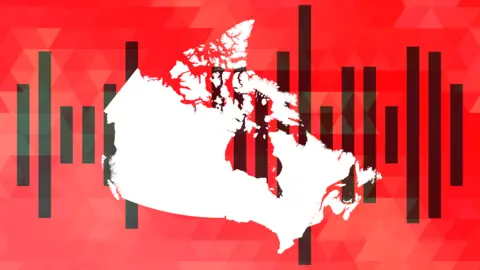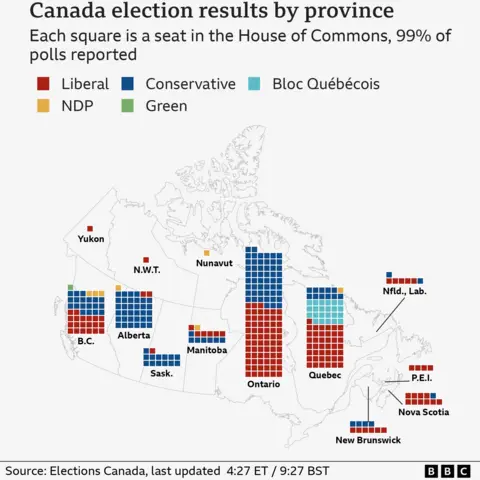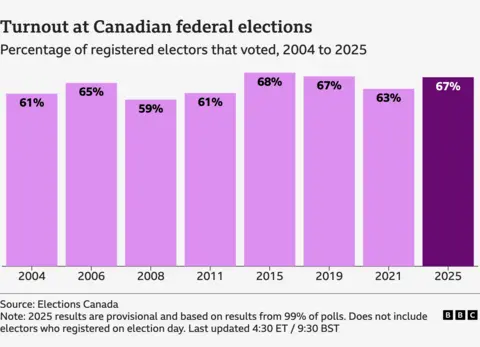Data journalism team
 BBC
BBCMark Carney’s Liberal Party is expected to win enough seats in the House of Commons to form a government in Canada. It is not yet clear whether it will be able to secure a majority.
Carney is set to remain prime minister, having only assumed the role in early March following Justin Trudeau’s resignation.
Carney’s Liberals are leading in 168 seats but are currently short of the 172 needed for a majority.
The Conservatives, led by Pierre Poilievre, are set to remain in opposition as the second-largest party and are leading in 144 seats, with 99% of polls having reported results.
Bloc Québécois – is leading in 23 seats and only runs candidates in the province of Quebec. The NDP is leading in seven seats and the Green Party in one.
Both the Liberals and the Conservatives have seen a significant rise in their share of the national vote compared with four years ago.
Increased support for Canada’s two largest parties has come at the expense of smaller parties, particularly the New Democratic Party (NDP) whose share of the popular vote is down by around 12 percentage points.
The NDP’s leader, Jagmeet Singh, has lost his own seat in the House of Commons and came third behind the Liberal and Conservative candidates.
Canada has a “first-past-the-post” electoral system.
The candidate who gets the most votes in each electoral district, or riding, wins that seat and become a Member of Parliament (MP).
The Liberals and the Conservatives have dominated the popular vote, with both parties receiving more than 40% each of ballots counted across Canada so far.
This has them on track to win a combined 90% of seats.
The NDP has received just over 6% of the total vote declared so far, but this translates to just 2% of seats in the House of Commons.
Bloc Québécois has just over 6% of the vote and a similar share of seats.

The Liberals are on course to win the most seats in the key provinces of Ontario and Quebec, which account for 200 of Canada’s 343 electoral districts.
The Conservatives are ahead in Alberta, while there is little to choose between the two main parties in British Columbia.

About two-thirds of registered electors voted, according to the preliminary results from Elections Canada. This is in up on the last election in 2021 and similar to 2015 and 2019.
More than 7 million Canadians cast their ballots in advance, setting a new record for early voter turnout, Elections Canada said.




